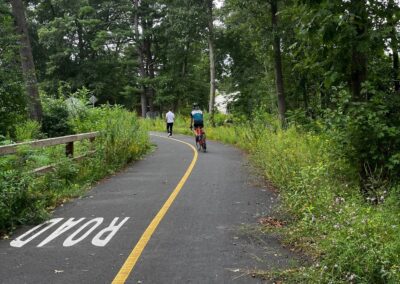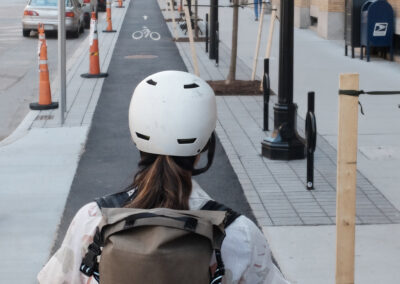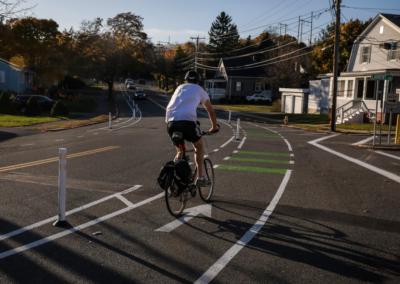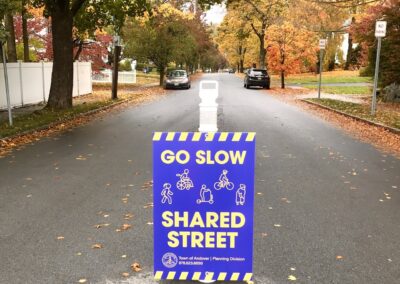Path and Nodes
Active Transportation Plan

Paths
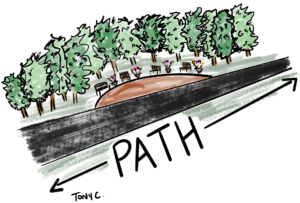
The Merrimack Valley’s Active Transportation Network (ATN) is made up of sidewalks, off-road shared use paths (rail trails), and on-street buffered and non-buffered bike lanes. The Active Transportation Network will connect people to regional destinations on safe and comfortable pedestrian and bicycle paths. By studying the region’s existing paths and the users’ experiences, MVPC can begin to understand which connections, improvements, and expansion will allow greater access to opportunities for our regional community.
Nodes
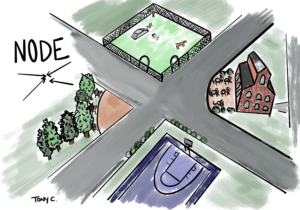
Nodes are points where two paths converge. Nodes are where people gather. Often intersections have the potential to be nodes as they are natural points along a route where people stop or slow down. MV Moves will identify potential nodes and enhancements to existing nodes where people want to stop, stay while, and take part in the public life that is happening at that place.
Types of Bicycle Infrastructure
Shared Use Paths also called trails, multi-use paths, greenways, or bike paths – are active transportation infrastructure shared by people walking, biking, or using other forms of active transportation. The paths are separated from motor vehicle traffic and tend to be ADA-compliant. Typically, shared-use paths are paved, but can also be stabilized aggregate, crushed stone, or unimproved natural surfaces. There are different types of shared-use paths, such as rail trails, rails with trails, sidepaths, and linear parks. Rail trails and sidepaths are the most common form of bicycle infrastructure in the Merrimack Valley.
Separated Bike Lanes, or protected bike lanes, are for the use of people biking, scootering, or using other mobility devices that travel at greater speeds than people walking. Separated bike lanes are designed for one-way travel along a street with motorized traffic. Separated bike lanes are separated from motor vehicle travel lanes by a horizontal buffer and a vertical element. Often separated bike lanes are at street grade, but can be at sidewalk grade. The buffer and vertical element create protection and a feeling of safety from motor vehicle traffic – resulting in a comfortable space for active transportation. The intensity in the level of protection varies in the design of separated bike lanes and considerably impacts the feeling of safety for road users.
Two-way Separated Bike Lanes are similar to sidepaths, but are for the use of people biking, scootering, or using other mobility devices that travel at greater speeds than people walking. Two-way separated bike lanes are designed for bidirectional travel on one side of a street with motorized traffic. Two-way separated bike lanes are separated from motor vehicle travel lanes by a horizontal buffer and a vertical element. Often two-way separated bike lanes are at street grade, but can be at sidewalk grade. The buffer and vertical element create protection and a feeling of safety from motor vehicle traffic – resulting in a comfortable space for active transportation. Two-way separated bike lanes are implemented when there are no nearby alternative routes or when one side of the street has far fewer intersections or driveways. It takes more work to make sure that intersections are safe for people biking in two-way separated bike lanes.
Bicycle Boulevards, or shared streets, are streets with low traffic volumes and speeds that have been designed to prioritize travel by active modes of transportation. Bicycle Boulevards use signs, pavement markings, and traffic calming measures to discourage cut through traffic and prioritize the movement of people outside of cars.

